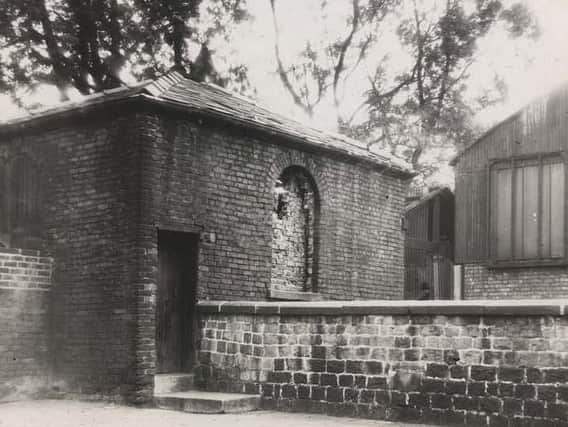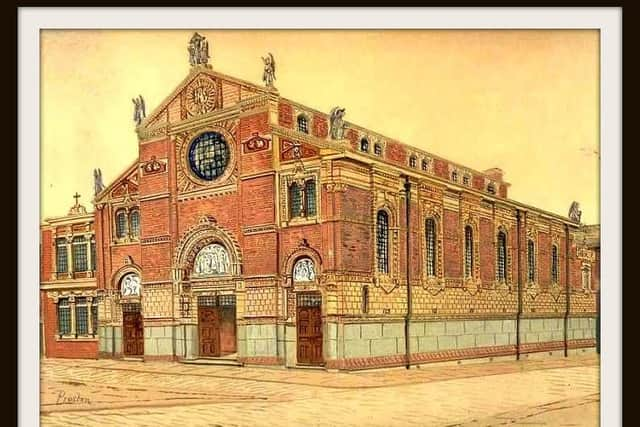Preston's forgotten cemetery


On December 13, 1817 the first burial took place at St Wilfrid’s Cemetery, on St Wilfrid Street, in Preston.
My interest in this long-forgotten cemetery is partly down to some of my distant relations having been buried there and also due to the fact so few people today know of its existence.
Advertisement
Hide AdAdvertisement
Hide AdSeveral years ago, when construction work was being done on the Premier Inn being built on Ringway adjacent to the cemetery, human remains were accidentally unearthed.


At the time, a local historian was quoted as saying it was probably a mass cholera grave from the 1840s, but I knew this to be incorrect.
A short time after that I was in the Lancashire Archives (where I work as an archive conservation technician) and overheard someone ask about St Wilfrid’s Cemetery, only to be told that St Wilfrid’s didn’t have a cemetery.
These two events encouraged me to undertake a research project and create a website dedicated to this long forgotten burial ground.
Advertisement
Hide AdAdvertisement
Hide AdWhat the workmen had discovered was not a mass grave of any description, but what was once a beautiful little cemetery in our city centre.


The spot was laid out with a lawn, shrubs around the perimeter and flowers growing among the headstones and other monuments.
In 1816, the Reverend Joseph “Daddy” Dunn, priest at St Wilfrid’s Chapel, purchased a plot of land to use as a burial ground for the town’s Catholic population.
The cemetery, in what was to become St Wilfrid Street, was behind the school Mr Dunn had opened in Fox Street two years earlier, and was a short walk from St Wilfrid’s Chapel which had no open space immediately around it.
Advertisement
Hide AdAdvertisement
Hide AdA high stone wall, some of which is still standing, enclosed the cemetery, with a path leading into the grounds from an ornate gateway in St Wilfrid Street.
An oratory (a small chapel used for graveside services) was built near to the boundary wall with the school, and was licensed to perform religious services on April 2, 1818.
Carved into the stone above the door to the Oratory was a biblical quote, “It is a holy and a wholesome thought to pray for the dead, that they may be loosed from their sins.”
The first burial, that of Mrs Rose McNally, took place on December 13, 1817 – 200 years ago today – and over the next 36 years more than 5,000 members of Preston’s Catholic community were interred there.
Advertisement
Hide AdAdvertisement
Hide AdBy the early 1850s the cemetery was becoming overcrowded and people living along St Wilfrid Street opposite the cemetery began to complain about the unpleasant conditions there.
This was a common problem in cities and larger towns, and something needed to be done. St Wilfrid’s Cemetery was one of many churchyard burial grounds in the town to be closed by an Act of Parliament dated January 30, 1854, with the last burial at St Wilfrid’s being that of Thomas Turner, aged 11 weeks, on April 8, 1854 (his mother had been interred there two months earlier).
As the years passed, the cemetery fell into a sad state of neglect. At some point all of the headstones were removed and various buildings of a temporary nature came and went. In 1955 the Oratory was pulled down, and the grounds were paved over to use as a playground for St Wilfrid’s School (pictured inset).
Many years ago a small group of volunteers, led by Margaret Purcell, undertook the task of transcribing the original burial records and bound copies of these and other St Wilfrid and St Mary’s transcripts are available to view at the Lancashire Archives in Bow Lane, Preston.
Advertisement
Hide AdAdvertisement
Hide AdThey are also available to buy on CD from the Catholic Family History Society. https://catholicfhs.wordpress.com/2012/10/13/113/
My interest in the cemetery led me to create a website at www.stwilfridscemetery.co.uk, which records the names of all of the known burials in both alphabetical and burial date order, and will eventually include a brief history of the cemetery and biographical information about some of the more notable interments at St Wilfrid’s.
These include a murder victim, a child killed in a horrific accident in a cotton mill, several drowning victims, priests, paupers, businessmen and women, and ordinary people whose lives should be remembered.